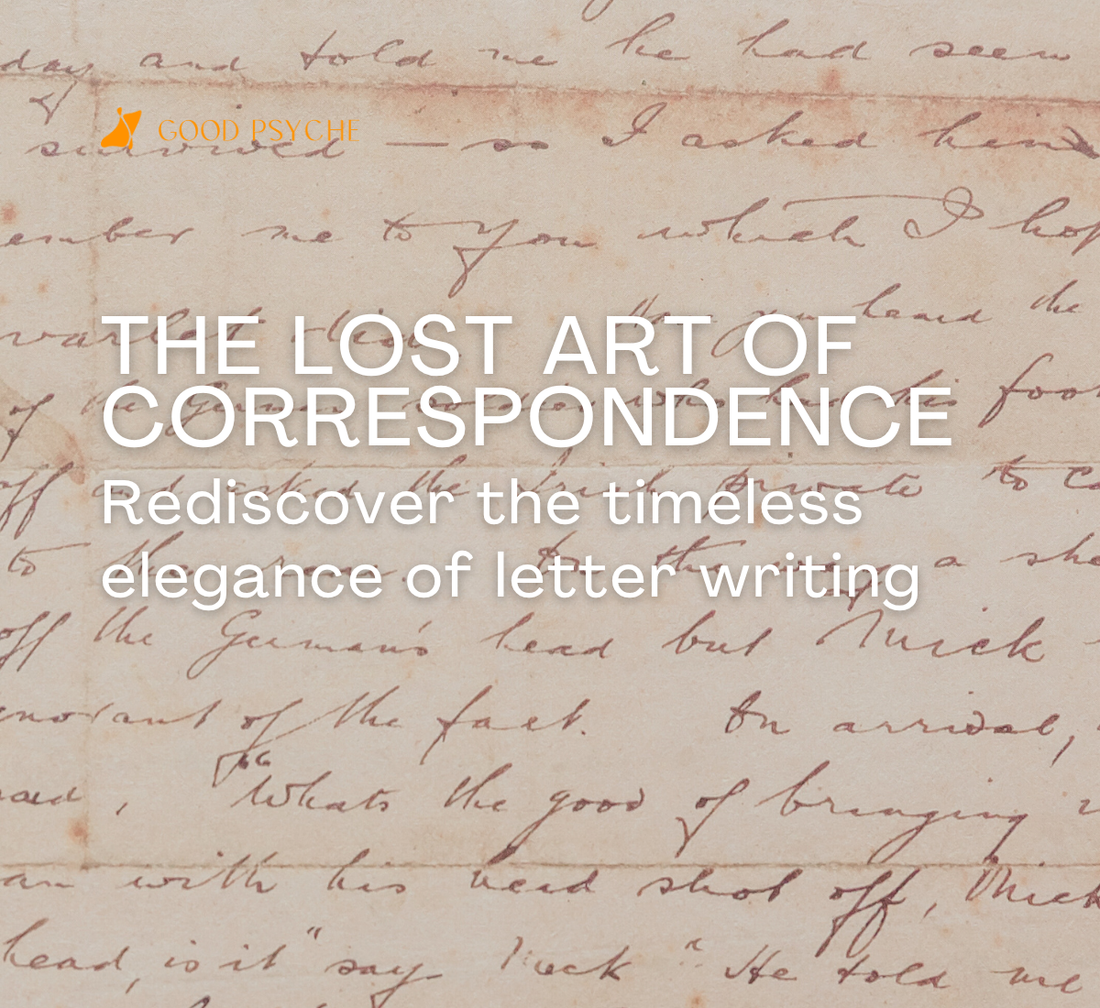
I received a letter this week from an old friend. It was a thank you note for sending a gift for her newborn, and I couldn't help but notice the tactile satisfaction and fulfillment that accompanied the emotional response to a letter from a friend.
The entire experience, from plucking the envelope from my mailbox, to the sound of opening it, the moment of quiet whilst reading it, and the feel of the letter that my friend had taken the time to carefully craft in her hands, in mine.
Isn't it strange that the majority of our ideas, thoughts, and feelings are no longer exchanged in person? In an era where a quick text or a hastily composed email has replaced most meaningful exchanges, the simple act of sitting down to write a letter feels like a rare and intimate luxury.
Yet, in the past, handwritten correspondence was not only a gesture of respect but a way to convey one’s thoughts with the kind of careful consideration that only the written word can capture. The art of letter-writing was a practice passed down through generations, honed over time, and performed with grace and intention.
There is something profoundly intimate about receiving a letter. It's very presence in your hands, the shape of the handwriting, which, in my case is atrocious. A letter is a snapshot of a moment, a reflection of the writer’s character, and a gesture that conveys much more than its contents.
The speed and ease of typing or texting enables us to include unnecessary filler words left and right. But you'll find very few fillers with handwritten letters; each requiring the effort of the muscles in our hands and the coordination between our hands and our brains.
In the days when letters were the primary mode of communication, this art was treasured for its sincerity, thoughtfulness, and attention to detail.
Letters were used to proclaim marriages and births, deaths and wars, giving a far more profound, weighty, or foreboding delivery.
The Meaning Behind the Words
In the past, correspondence was not just about relaying information. Each sentence was carefully chosen to reflect a certain sense of decorum, sophistication, and, above all, patience. There was time to reflect on the right words to say, to consider the recipient’s needs, and to craft a message that would leave a lasting impression.
What is lost in the convenience of modern communication is that sense of space—the luxury of time taken to gather one’s thoughts and to express them meaningfully. Today, a “thank you” might be conveyed in an impersonal text or a fleeting social media comment, but a handwritten note has the power to transform a moment, turning the mundane into something special.
A Legacy of Thoughtfulness
Writing a letter is not merely a functional act—it is an extension of one’s self. For those who appreciate the nuances of refined living, letter-writing is not only an exercise in good manners but an opportunity to reflect on the relationships that define us. It is, in a way, a practice of cultivation—both of character and of connection.
The stationery you choose, the ink you use, even the manner in which you seal the envelope, all reflect the care and respect you hold for the recipient. A handwritten letter is a message with intention, a statement that one’s thoughts are worth more than the transient nature of a text or email. It says, in essence, that you are worth the time and attention it takes to craft a message just for you.
Preserving the Tradition
In the world of fleeting messages and digital exchanges, bringing back the art of correspondence can be a small but profound act of rebellion. It is a return to the slower pace of life—a conscious choice to honor relationships and moments in a way that our fast-paced world often dismisses.
To write a letter is to embrace a tradition that carries the weight of history. It is an acknowledgment that what is valuable often takes time to nurture and maintain. Just as the finest things in life—whether in art, fashion, or even gardens—are often the products of patience and care, so too is the act of correspondence.
A Personal Touch in an Impersonal World
In a time where many feel disconnected despite being constantly “connected,” a letter serves as a quiet reminder of the richness found in personal interaction. A handwritten note carries with it the essence of its sender—imbued with their personality, their time, and their energy. It is a gift, often unexpectedly received, that can bring a sense of intimacy and warmth that no email or text ever could.
For those who wish to cultivate more meaningful connections, to bring back a sense of dignity and intention to their communication, writing a letter is perhaps one of the most cherished practices to reclaim. It is, after all, a timeless art—one that transcends fleeting trends and resonates with a sense of quiet refinement.
Are you up for a challenge? Try crafting a handwritten letter this week and observe the response from the recipient. I'll bet it is one of surprise and delight.
Thanks for reading The Good Journal.
If you enjoyed this post, forward it to a friend or family member who may enjoy it as well.

